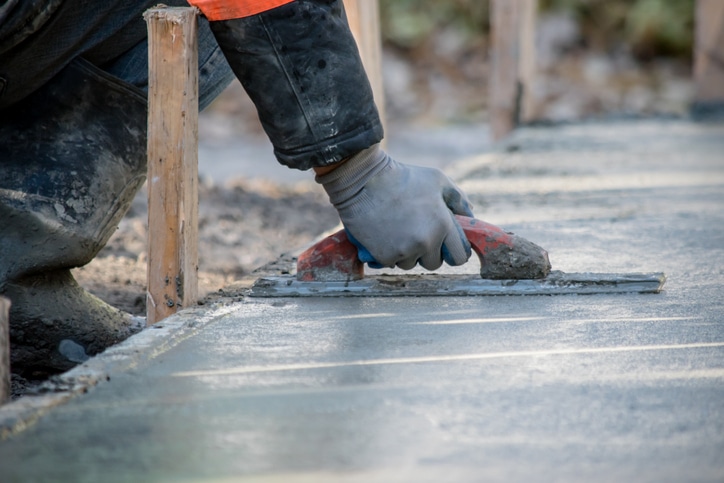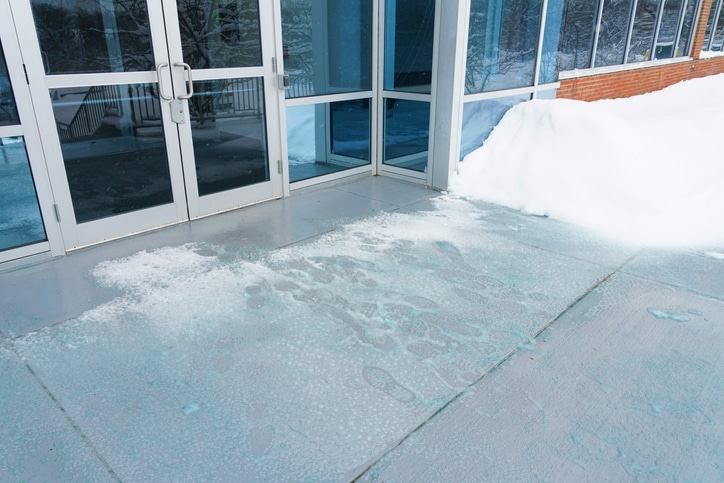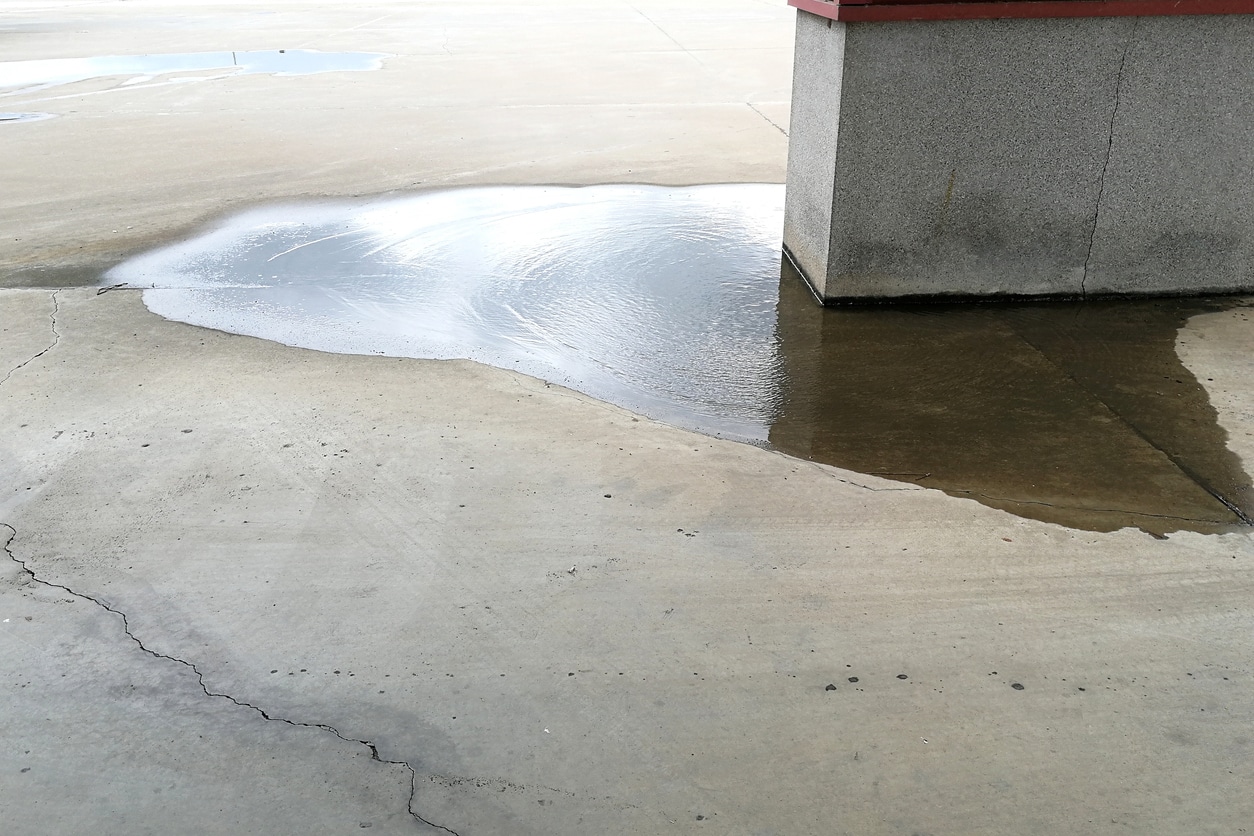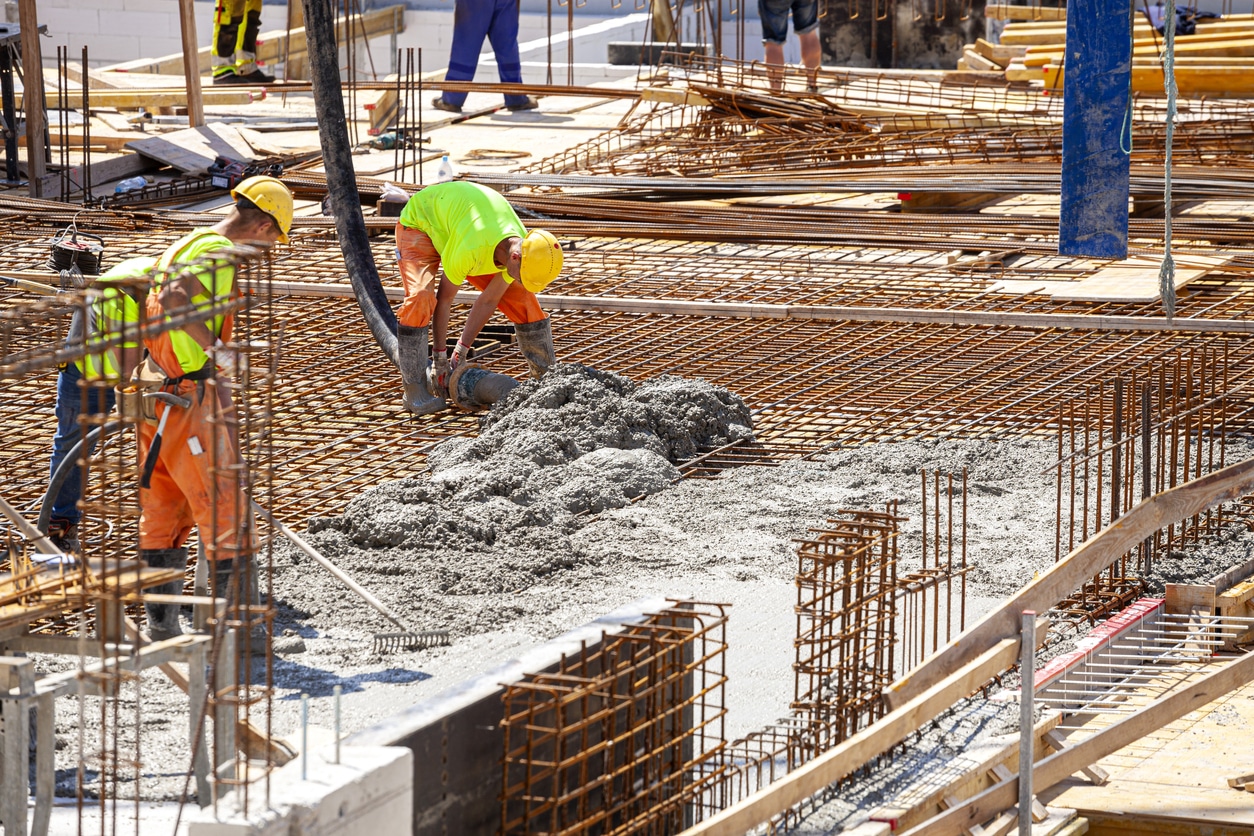Truck parking lots for commercial use must accommodate heavy loads and larger vehicles. Additionally, mixed-use…

The Impact of Weather on Concrete Paving, Repair, and Maintenance
Concrete is a robust material used in various constructions, including roads, buildings, and pavements. However, its durability can be significantly influenced by weather conditions, making it imperative for professionals to understand how to manage these effects during concrete paving, maintenance, and repair.
In this blog post, K&E Flatwork will discuss the impact of weather on concrete conditions, provide best practices for paving in different climates, and offer tips for maintaining and repairing weather-damaged concrete.
How Different Weather Conditions Affect Concrete
The Effects of Temperature Extremes
Temperatures at extremes pose a significant challenge to concrete. Concrete can hydrate too quickly in high temperatures, reducing its overall strength and longevity. Hot weather can also lead to increased water evaporation from the concrete mix and necessary adjustments, such as adding more water, which can further weaken the concrete.
On the other hand, in cold temperatures, the hydration process of concrete slows significantly or stops, preventing the concrete from setting correctly and increasing the risk of frost damage, which can create cracks and compromise structural integrity.
Moisture and Precipitation Concerns
Moisture and precipitation also significantly impact the concrete structure. Excess humidity can weaken the concrete’s surface, making it more susceptible to wear and degradation.
Rainfall can alter the water-cement ratio in freshly poured concrete, affecting its strength. Additionally, freeze-thaw cycles in climates that experience cold winters can cause expansion and contraction in concrete, leading to cracking, scaling, and crumbling.
Best Practices for Concrete Paving in Various Weather Conditions
Paving in Warm and Hot Weather
When paving in warm or hot weather, planning the concrete pouring early in the morning or late in the evening is crucial to avoid peak temperatures. Cooling aggregates or chilled mixing water can also help manage the concrete temperature. Covering fresh concrete with sunshades or moist curing blankets helps retain moisture and avoids uneven curing.
Cold Weather Paving Challenges
Maintaining the concrete temperature above 5 degrees Celsius for the first 48 hours after pouring is essential for cold weather conditions. This can be achieved by using heated enclosures or thermal blankets. Adding accelerators to the concrete mix can help speed up the hydration process, reducing the risk of freezing before the concrete sets.
Selecting the Right Concrete Mix for Weather Resistance
Choosing a concrete mix that suits the specific climate conditions for the area is crucial. For example, air-entrained concrete is beneficial in colder regions as it helps better manage freeze-thaw cycles by introducing tiny air bubbles into the concrete, providing spaces for water to expand when it freezes.
Timely Application of Sealants to Ward Off Weather Damage
Applying high-quality sealants can protect concrete from moisture penetration, UV rays, and chemical exposures. Sealants should be applied after the concrete has cured completely and then regularly throughout its lifetime, especially in areas with severe weather conditions.
Proper Paving Techniques to Offset Weather-Related Stresses
Proper compaction and jointing will help manage the stresses caused by temperature changes and moisture exposure. Joints allow concrete pavements to expand and contract without causing surface cracks.
Maintenance Strategies for Different Seasons
Summer Maintenance Tips
Protecting the concrete from extreme heat and direct sunlight is essential during summer. Regular cleaning and applying a reflective surface treatment can reduce surface temperature and slow down the aging process caused by UV exposure.
Winter Care and Repair for Concrete
In winter, deicing chemicals should be used cautiously as they can cause concrete scaling and deterioration. Prompt snow removal and using sand for traction can help reduce the need for chemical deicers. Regular inspections for cracks and prompt repair of any damage help manage the harsh winter effects on concrete.
One of the most common repairs that K&E Flatwork does are driveway repairs and replacements in the Kansas City area. By nature, driveways receive a lot of traffic; however, with the proper maintenance, they can last up to 40 years.
Preparing for Weather-Related Concrete Damage
Identifying Potential Weather Damage
Regular inspections can help identify potential problems early. Signs of weather damage include cracks, surface scaling, and joint deterioration. Knowing these signs can prompt timely intervention.
Preventative Measures
Preventative measures include proper installation and timely maintenance practices like sealing and water management to minimize water ingress and its damaging effects.
Repairing Weather-Damaged Concrete
Common methods for repairing weather-damaged concrete include patching the affected areas, using sealants, and occasionally, overlaying with new concrete. These methods depend on the extent of the damage.
Choosing the Right Repair Materials
Selecting repair materials compatible with the existing concrete and suitable for specific environmental conditions is vital. For example, epoxy-based compounds are effective for repairing cracks in warmer conditions.
The Role of Technology in Weather-Resistant Concrete Paving
Innovative Concrete Mixes
Technological advancements have led to innovative concrete mixes that are more resistant to weather-related damage. These include high-performance concrete mixes that improve durability and lessen the environmental footprint.
Monitoring and Predictive Maintenance Tools
Technological tools such as sensors can monitor the health of concrete structures in real time, predicting potential issues before they become severe problems. This proactive approach helps in extending the lifespan of concrete pavements and structures.
Assess Your Concrete Climate Accurately
Understanding the impact of weather on concrete and employing best practices in paving, maintenance, and repair is crucial for extending the lifespan of concrete structures. By embracing new technologies and materials, we can better prepare and protect our concrete infrastructures from the harsh weather effects.
If you want to improve your concrete installations, consider consulting with us. K&E Flatwork is Kansas City’s professional flatwork and concrete repair company.
Request a free estimate with a specialist who can provide tailored solutions for your specific needs, and we can help implement the most effective strategies for maintaining your concrete.




